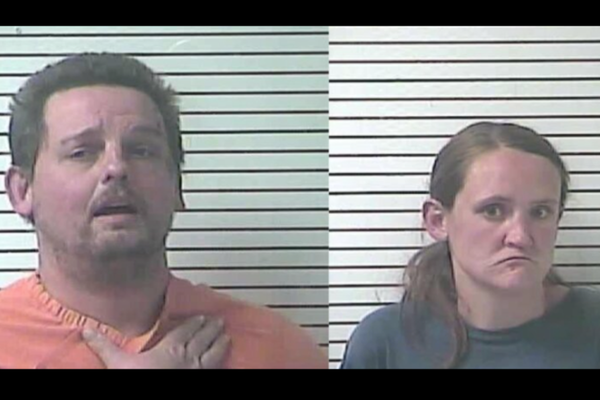As I noted earlier this morning, Friday's Report and Recommendation in Garrett v. City Univ. of N.Y. (S.D.N.Y.) (written by Magistrate Judge Robert Lehrburger) discusses the limits the First Amendment imposes on "hostile work environment harassment" law (as well as the similar rules as to education, public accommodation, and housing). It concludes that the First Amendment generally protects material on matters of public concern that isn't directly targeted to particular offended people based on their religion, race, sex, etc., but that other speech and conduct that is severe or pervasive enough to create a hostile work environment based on those attributes may be actionable.
The opinion is long, so I've divided it into several parts. Another post discusses the alleged behavior that the court concluded were protected by the First Amendment, while this post discusses the alleged incidents that are "actionable in the sense that they are within the reach of Title VII and not merely political speech protected by the First Amendment":
[1.] Accepting all allegations as pled and drawing all reasonable inferences in Garrett's favor, the anti-Hillel protest plausibly crossed the line into targeted harassment. President Kirschner described the protest as "reach[ing] a new level of aggression by targeting Hillel" and "personal[ly] targeting Jewish students." Many students—as well as Garrett—felt "compelled" to leave campus. While protestors are free to criticize Hillel, or any campus organization for that matter, with strong and even offensive language, antidiscrimination law does not permit an employer to stand idly by when, as here, protestors "isolated or targeted individual[s]" in the protected class. Landau.
To be sure, discovery may show the protest did not involve threatening or humiliating targeted conduct. But given President Kirschner's own description of the event as "personal[l]y targeting" Jewish students and reaching a "new level of aggression" that compelled students and Garrett to leave campus, the Court concludes that Garrett has, at this early stage, plausibly pled actionable harassment from the Hillel protest.
{Generally, a plaintiff cannot transform political speech into actionable harassment by alleging, in a conclusory fashion, that the protected expression was targeted or otherwise actionable. See Gartenberg ("conclusory suggestion that [certain] speech included [actionable] 'threats of violence' … does not plausibly allege that any of this expressive conduct constituted" harassment). Here, however, the Complaint relies on Hunter President Kirschner's own account of the event.}
[2.] Garrett alleges a student was "physically assaulted, as his pro-Israel sign was forcibly taken from him" at one protest. This allegation is actionable because the "First Amendment does not protect violence." NAACP v. Claiborne Hardware Co. (1982).
[3.] [T]he Complaint … alleges that a student grabbed a microphone from the rabbi's hand [at the Israelism screening, to which the rabbi had been invited as a debater], and that the rabbi was "led away … for his safety with security by his side" as the "crowd … hurl[ed] abuse at him" following the panel. (Compl. ¶¶ 74-75 (describing the incident as a "mob attack"); see also Opp. at 1 (describing the rabbi being "accosted" by students).) Making all reasonable inferences in Garrett's favor, the rabbi's treatment at CUNY went beyond political disagreement. The use of physical force by a student to take the microphone from the rabbi and the need for security to escort the rabbi from the auditorium for his safety is suggestive of actionable harassment. Cf. Gartenberg I (finding "mob" attack on library actionable where there was "compelling support for [plaintiffs'] allegation that this incident was threatening or humiliating," including that some Jewish students were escorted away from the scene by security).
[4.] The Complaint plausibly alleges three episodes in which individual Jewish professors, including Garrett, and students at CUNY were subject to targeted antisemitic commentary: the Lecturer's in-class question singling out a Jewish student about how she felt "about 'the genocide in Gaza'"; Professor Soyer's remark questioning Garrett's faith and mentioning "rich Jews" to two colleagues; and a student's email to a Jewish professor comparing Jews to "Satan worshipers." {A professor's discussion and questioning of students about controversial subjects, including asking what they think about genocide and what they may consider genocide, may well be perfectly appropriate and protected academic fodder. Here, however, the Complaint insinuates that the Lecturer singled out a Jewish student in an accusatory manner.} Each of these incidents falls within the zone of targeted speech that may be deemed harassment rather than protected political speech. See, e.g., Novio v. New York Academy of Art (S.D.N.Y. 2017) (offensive "comments in class directed at [student]").
The student group's email making a "false and defamatory" claim that Garrett "potentially disseminated decontextualized clips of students … to deliberately portray [them] as antisemites" is similarly actionable. CUNY correctly points out that the email was directed to the community at large through a generally accepted method of communication and was not physically threatening. However, other aspects of the communication suggest targeted harassment. First, the email specifically mentions Garrett and, given the wide distribution, could well be humiliating. That alone, however, would likely be insufficient: the First Amendment provides speakers with latitude to criticize others, particularly authority figures, in the context of a genuine public debate. See Hustler Magazine, Inc. v. Falwell (1988) ("political debate encouraged by the First Amendment is bound to produce speech that is critical of … public figures").
Garrett's allegations, however, go one critical step further. Although couched in terms of what "potentially" happened, the student group's statement about Garrett was allegedly "false and defamatory," thus diminishing the constitutional protection it might otherwise receive and exacerbating its humiliating effect. See Landau ("outlandish claim that [student-plaintiff's statement] … was a contributing factor to the tragic shooting of a Palestinian Haverford student" made in widely-circulated document was actionable under Title VI); Jew v. University of Iowa (S.D. Iowa 1990) ("Free speech and academic freedom considerations might preclude Title VII liability if the … rumors [that a professor was having a sexual affair with her department head] were true") [what a name for a relevant case, though it appears the plaintiff there was likely not actually Jewish -EV]]; see generally Hustler ("False statements of fact are particularly valueless" to public debate and may, in certain circumstance, give rise to civil liability). Put another way, circulating false accusations about an employee that implicate a protected characteristic can be actionable harassment.
{The Complaint fails to specify exactly how the student group's caveated accusation was "false and defamatory." For instance, did Garrett not disseminate clips of students? Did she disseminate clips without the necessary context? Or, perhaps discovery will show that the statement was not false at all. Still, for purposes of the instant motion, the Court must accept the allegations contained in the Complaint as true and make all reasonable inferences in Garrett's favor.}
[5.] CUNY does not contest that the swastikas graffitied on posters commemorating Jewish hostages in Gaza are actionable under Title VII. Similarly, CUNY does not contest the actionability of its refusal to provide security at Garrett's events or to permit the school's Jewish community to light menorahs on campus.
The Magistrate Judge also recommended that the court find that CUNY was potentially liable for some of the incidents:
Employers are presumptively liable for the [harassing] actions of a supervisor. Where the harasser is not a supervisor but rather a co-worker or non-employee, a negligence standard applies. That is, the non-supervisor's conduct may be imputed to the employer where "the employer's own negligence permits or facilitates [the] discrimination."
You can read the full opinion for more detail on where the report concluded such supervisor actions, or CUNY negligence, was present.
The Magistrate Judge also concluded that "the remaining allegations plausibly establish a severe or pervasive hostile work environment" (the threshold that must be met to show actionable harassment); again, details on that can be found in the opinion. And the judge concluded that Garrett had adequately alleged that the environment was hostile to her because she was Jewish:
CUNY asserts that the alleged conduct—actionable or otherwise—was not "prompted by plaintiff's religion" and "instead rooted in the conflict between Israel and Hamas." … [But t]he Complaint clearly, repeatedly, and plausibly alleges that the challenged conduct was hostile and discriminatory to Garrett (and other Jews) because of her religion, and "reflected … attack[s] on [Garrett] as a [Jew]." See also Gartenberg I (finding similar alleged conduct was, at least plausibly, "particularly offensive to Jews and intended to provoke their reaction as Jews").
For example, CUNY's refusal to permit a menorah lighting on campus, "a cherished Jewish tradition," while permitting a Ramadan event, as well as its failure to provide security for Garrett's events on Jewish culture, would be uniquely offensive and plausibly discriminatory to Garrett and other Jews at CUNY who hoped to celebrate their religion and heritage. And, obviously, antisemitic remarks directed at or regarding Garrett and other Jewish faculty members, and swastikas graffitied across campus created an environment that was hostile "because of" Garrett's protected characteristic….
The post What Alleged Behavior Could Lead to Liability for Anti-Semitic Harassment in CUNY Hunter College Case appeared first on Reason.com.







